
Artificial intelligence (AI) is no longer experimental — it has become an essential part of everyday operations in clinics, hospitals, and diagnostic centers. Today, it supports tasks that were once fully manual, such as triage, data analysis, documentation, and report generation, directly improving productivity, safety, and quality of care.
This evolution comes at a time when the healthcare sector faces high demand and slow, fragmented processes. AI acts as an intelligent layer that automates steps, reduces errors, and frees teams to focus on patient care. In this article, we explore real-world examples of this transformation, including Ninsaúde Clinic, Ninsaúde Safe, and 224Scan.
1. AI in organizing clinical data and electronic health records
One of the most established applications of artificial intelligence in healthcare is the ability to extract, structure, and interpret large volumes of clinical data. Even in small or medium-sized practices, electronic health records store years—sometimes decades—of accumulated information: patient history, exams, clinical evolution, prescriptions, images, and communications. When well organized, this information becomes a valuable asset for predicting risks, identifying patterns of evolution, improving diagnosis, and supporting decision-making.
AI applied to the electronic health record can automate a range of tasks:
- summarizing long medical notes,
- identifying key clinical findings within extensive narratives,
- structuring data chronologically to provide clearer follow-up,
- suggesting standardized clinical components,
- supporting documentation consistency across professionals.
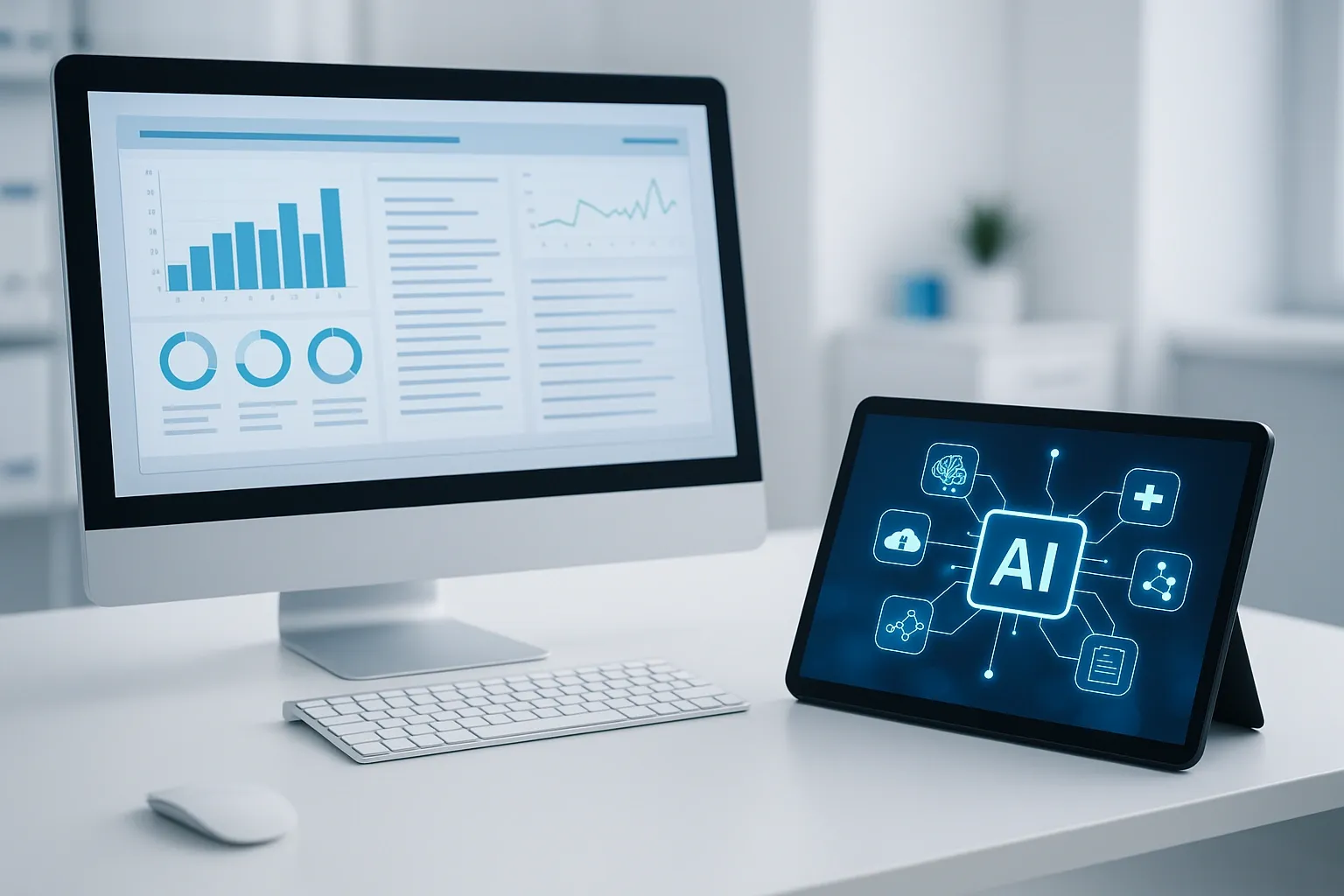
This automation reduces fragmented data, improves the continuity of care, and provides clarity for clinicians reviewing complex histories. It also strengthens audit processes, supports research, and enhances institutional safety.
2. Ninsaúde Safe: AI to transcribe consultations and structure clinical documentation
A practical and increasingly common example of AI in healthcare is Ninsaúde Safe, a tool integrated into the Ninsaúde Clinic system. It allows healthcare professionals to record the entire consultation and use artificial intelligence to automatically transcribe, interpret, and organize the information into structured clinical evolution notes.
One of the unique advantages of Ninsaúde Safe is the customizable prompt configuration, which gives professionals freedom to define how they want the AI to write:
- preferred technical vocabulary,
- level of objectivity or detail,
- priority sections (chief complaint, clinical reasoning, history, hypothesis, treatment plan, evolution),
- style preferences (more narrative, more objective, bullet points),
- structural format of the clinical note.
The screenshot provided shows exactly this degree of customization—temperature, reasoning effort, verbosity, presence penalty, and specific instructions. Every medical specialty can shape the AI’s behavior according to its own standards.
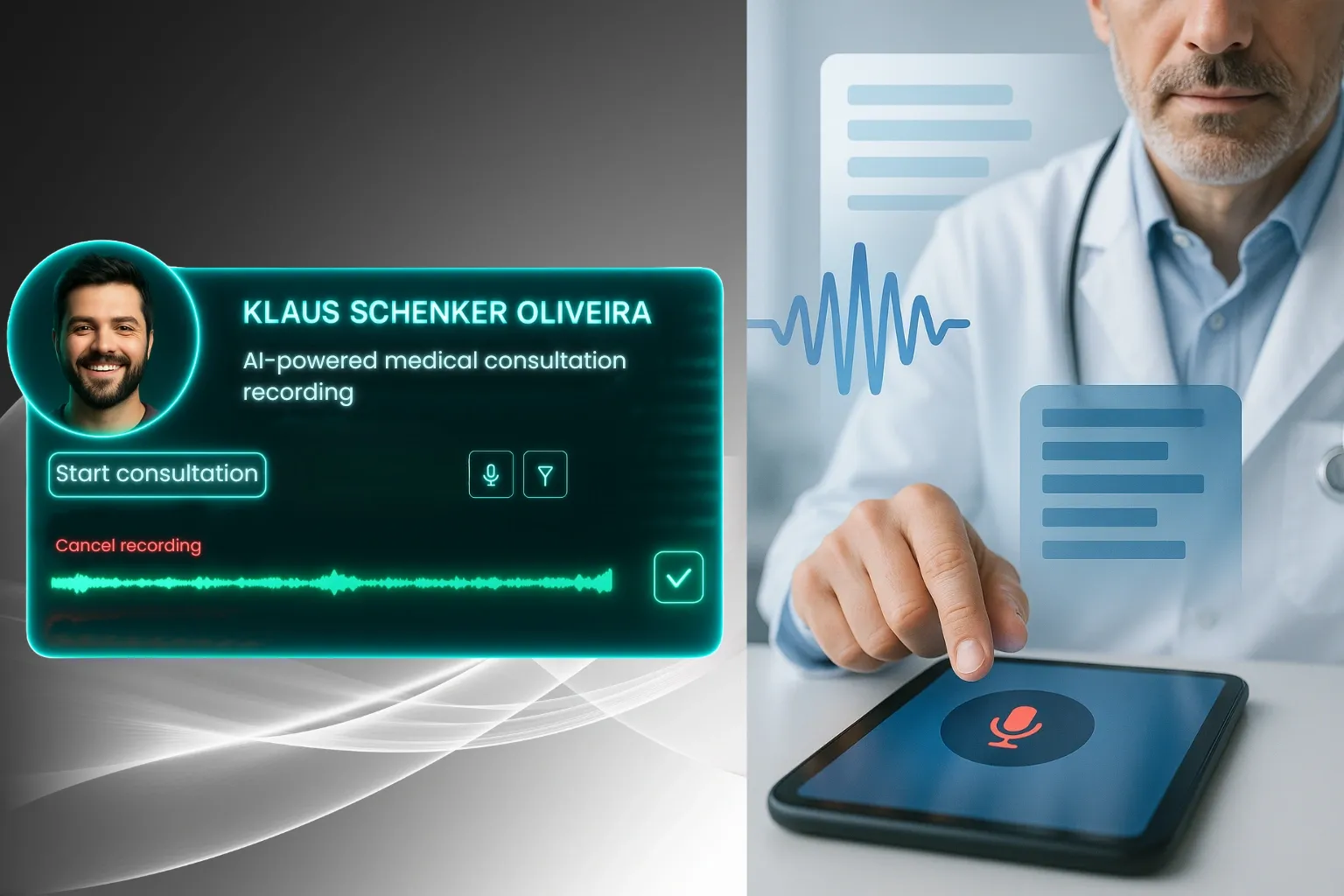
In practice, the benefits are significant:
- less time writing and more time attending to patients,
- greater consistency among clinical notes,
- clearer documentation for teams working with the same patient,
- reduction of transcription errors,
- stronger medico-legal protection with better-structured notes.
With the growing demand for agile and accurate documentation, Ninsaúde Safe shows how AI can be incorporated into the clinical workflow without disrupting professional autonomy or clinical reasoning.
Before we move on, one important note: if you manage a healthcare clinic and need better scheduling organization, a secure electronic health record, and centralized financial processes, Ninsaúde Clinic can streamline your daily operations. Get in touch to learn more.

3. AI in medical software: tangible benefits for clinics
Beyond transcription and documentation, artificial intelligence is already integrated into several layers of medical software—especially platforms designed for clinical efficiency and operational management. The benefits include:
• Automation of repetitive administrative tasks
AI can:
- confirm appointments through automated messages,
- suggest ideal appointment times,
- anticipate scheduling conflicts,
- predict peak hours and help manage staff allocation.
These automations reduce administrative burden and minimize errors caused by manual routines.
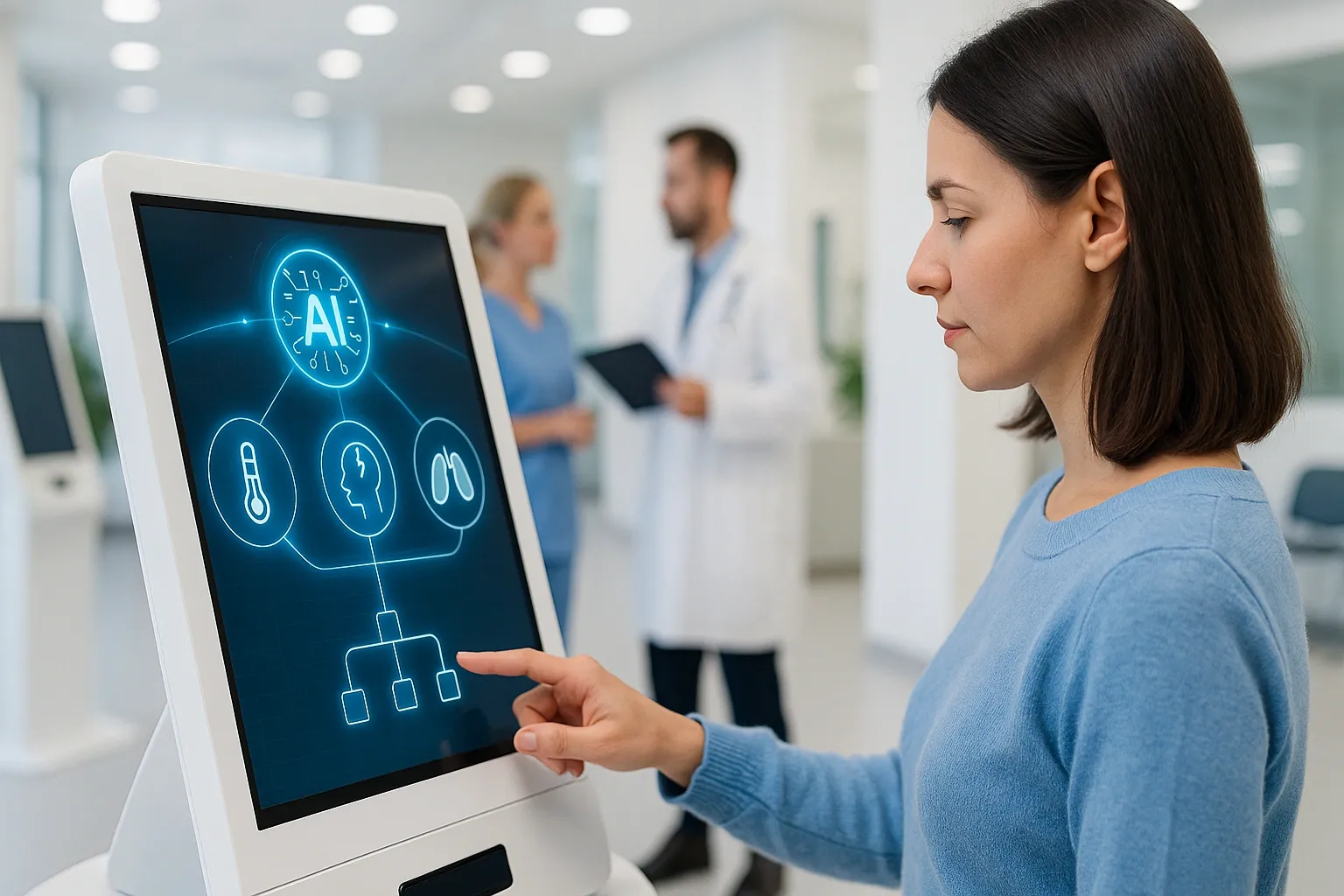
• Decision support
AI models analyze patterns across thousands of medical histories to:
- identify clinical risks,
- highlight unusual patterns,
- support diagnostic reasoning.
Although AI does not replace medical judgment, it enriches the clinical process with insights that might otherwise go unnoticed.
• Patient experience and communication
AI enables personalized communication:
- appointment reminders,
- follow-up instructions,
- educational messages,
- automated post-visit feedback collection.
Effective communication directly reduces no-show rates and increases patient satisfaction—key indicators for clinic sustainability.
Ninsaúde Clinic integrates these principles within a modern and scalable architecture capable of supporting multi-specialty and multi-unit practices.
4. 224Scan: AI for image interpretation and automated medical reports
Another strong example of artificial intelligence in healthcare is 224Scan, a Ninsaúde solution designed for medical imaging. In many institutions, the delay in generating reports causes bottlenecks and slows down patient care. The 224Scan automates this entire process and generates reports in approximately 60 seconds.
The solution works in three stages:
- Image capture through the 224 Client, which automatically receives DICOM files.
- Processing by the 224Scan Discovery algorithm, capable of analyzing billions of images per second.
- Report generation, which can be integrated directly into the hospital software or accessed through the 224Scan Web interface.
The main benefits include:
- drastically reduced waiting times,
- increased productivity in sectors with high exam volume,
- prevention of reimbursement delays due to late reports,
- consistent and standardized interpretations.
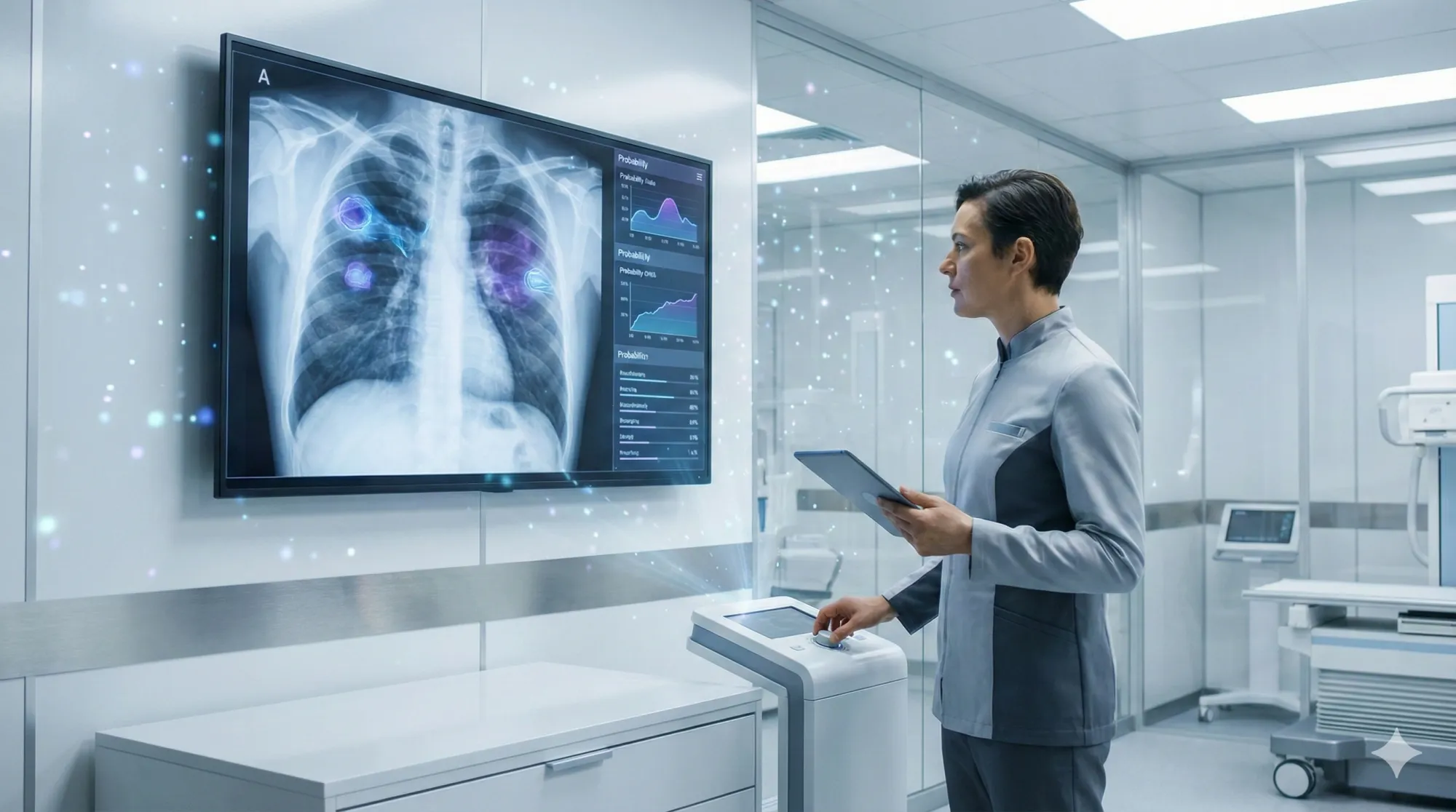
Because it accelerates exam interpretation and supports financial predictability, 224Scan plays a strategic role in hospitals that need to maintain high throughput and operational stability.
5. AI in triage and initial patient assessment
Artificial intelligence is also gaining ground in early stages of care, especially in triage. AI-powered systems can:
- analyze symptoms described by the patient,
- compare them with clinical history and risk factors,
- determine the urgency level,
- recommend the appropriate specialty or care path.
This approach reduces waiting times, increases safety, and helps ensure that serious cases are prioritized.
In alignment with your request, no potentially competing tools are cited.
6. AI in operational and financial management
AI is not limited to clinical activities—it plays an essential role in healthcare administration. Examples include:
• Predictive analytics for demand management
Models forecast:
- periods of higher patient flow,
- staff demand,
- resource allocation needs.
• Glosa analysis and reimbursement performance
AI detects patterns that often lead to denied claims and helps teams correct errors before submission.
• Fraud and inconsistency detection
Algorithms analyze billing, patient records, and procedural patterns to identify irregularities, improving compliance and safety.
Together, these capabilities strengthen financial stability and support data-driven managerial decision-making.
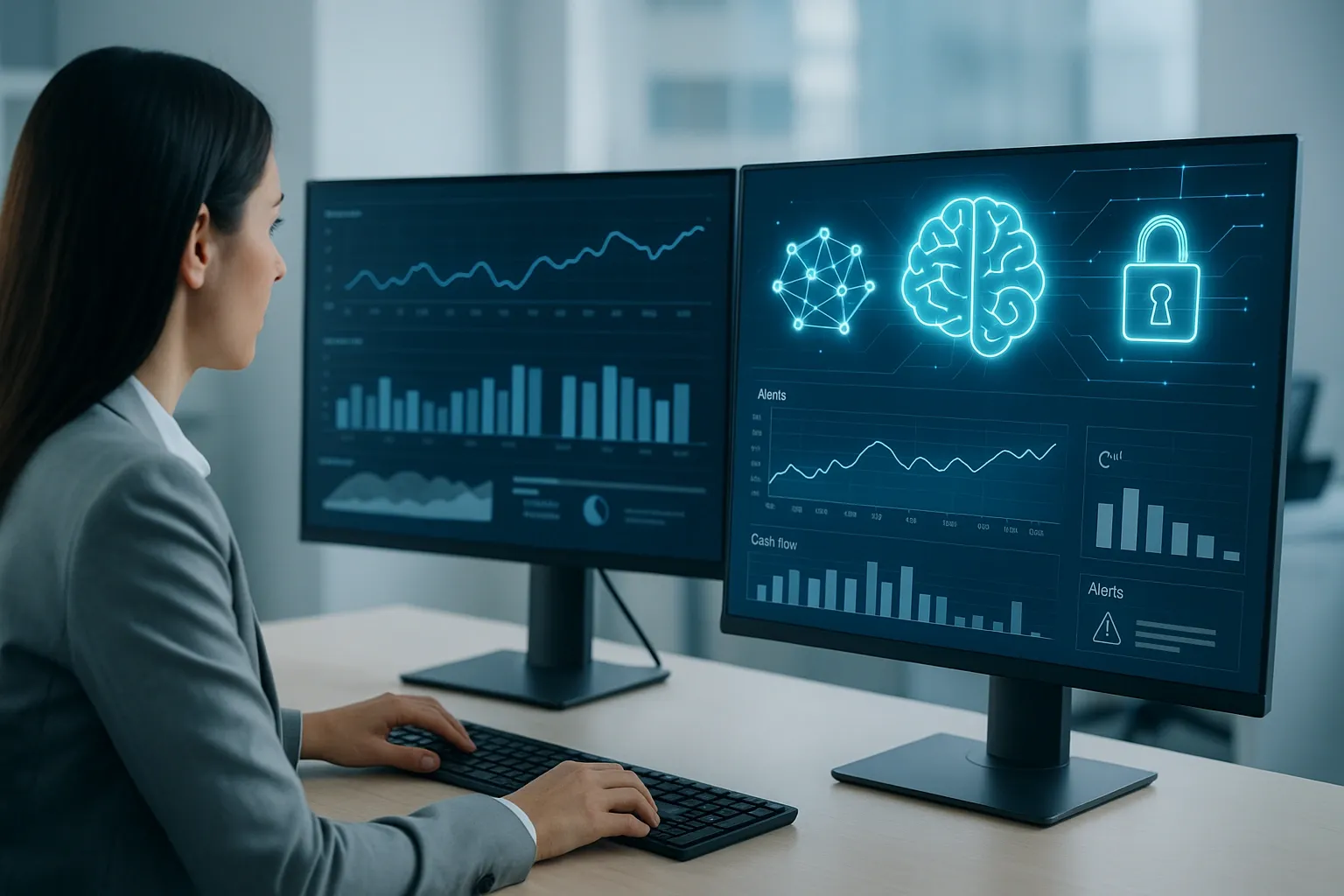
7. AI for remote monitoring and continuous care
With the expansion of telemedicine and wearable devices, AI interprets data from:
- smart oximeters,
- glucose monitors,
- cardiac sensors,
- sleep and activity trackers,
- smart scales.
If a patient presents abnormal results, AI can trigger alerts, enabling earlier interventions and reducing risks related to chronic conditions.
8. AI for medical education and continuous improvement
AI also benefits professional education by:
- analyzing large datasets of scientific literature,
- summarizing evidence automatically,
- updating clinical protocols based on guidelines,
- simulating diagnostic scenarios for learning.
This makes medical knowledge more accessible and faster to apply in clinical practice.
AI is not the future — it is the present of healthcare.
Artificial intelligence is already shaping the present of healthcare. Tools such as Ninsaúde Safe and 224Scan show that AI delivers value not only to diagnostics but also to documentation, communication, operational efficiency, and financial stability. These examples reveal that AI is not merely technological—it's strategic. It transforms data into decisions, processes into efficiency, and information into better care.
Enjoyed these insights?
Keep following our blog for more content on clinic management, medical marketing, and healthcare innovation.
Are you a healthcare professional who hasn’t tried Ninsaúde Clinic yet? Discover how the platform can streamline processes and elevate the quality of patient care.

